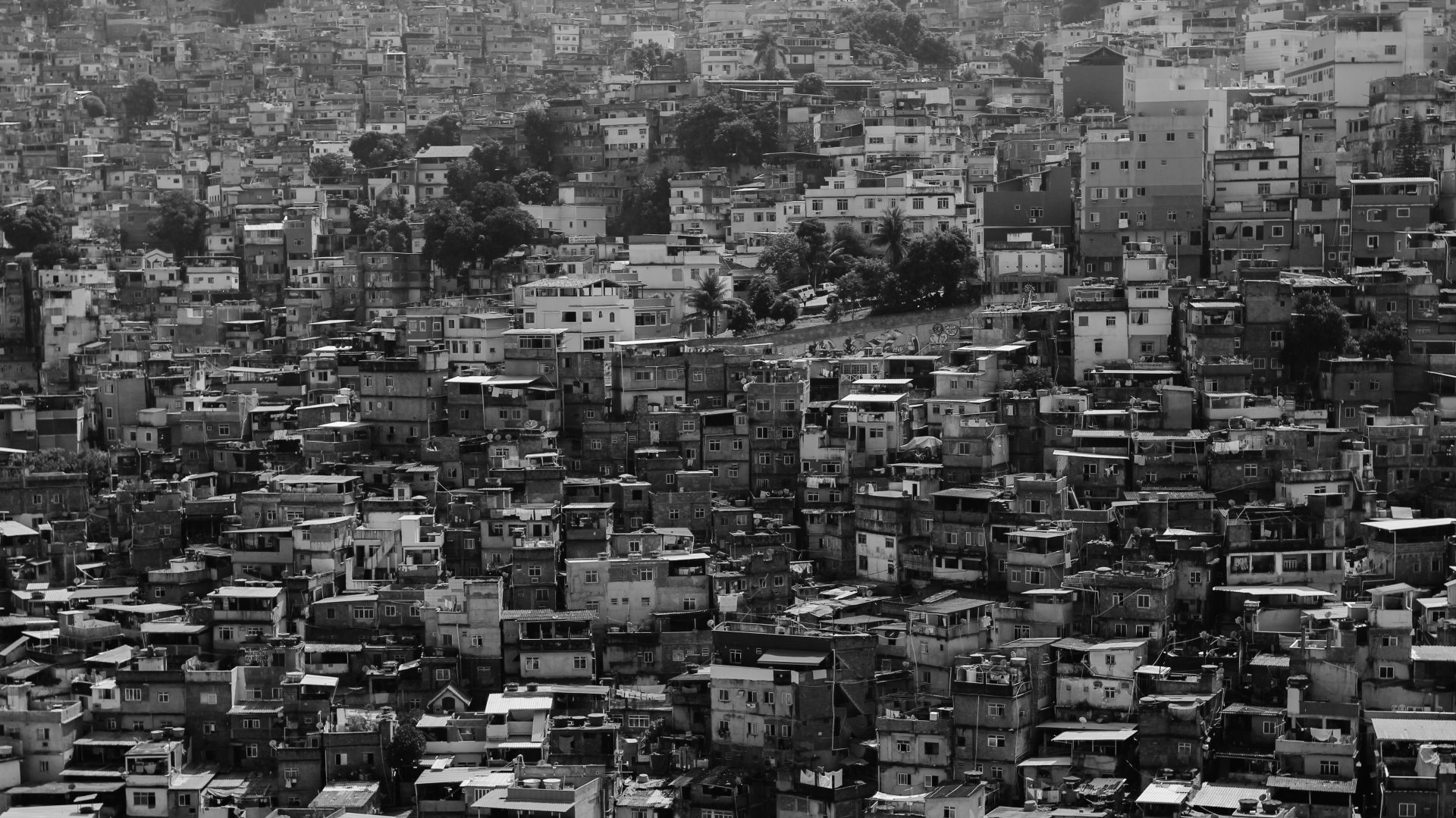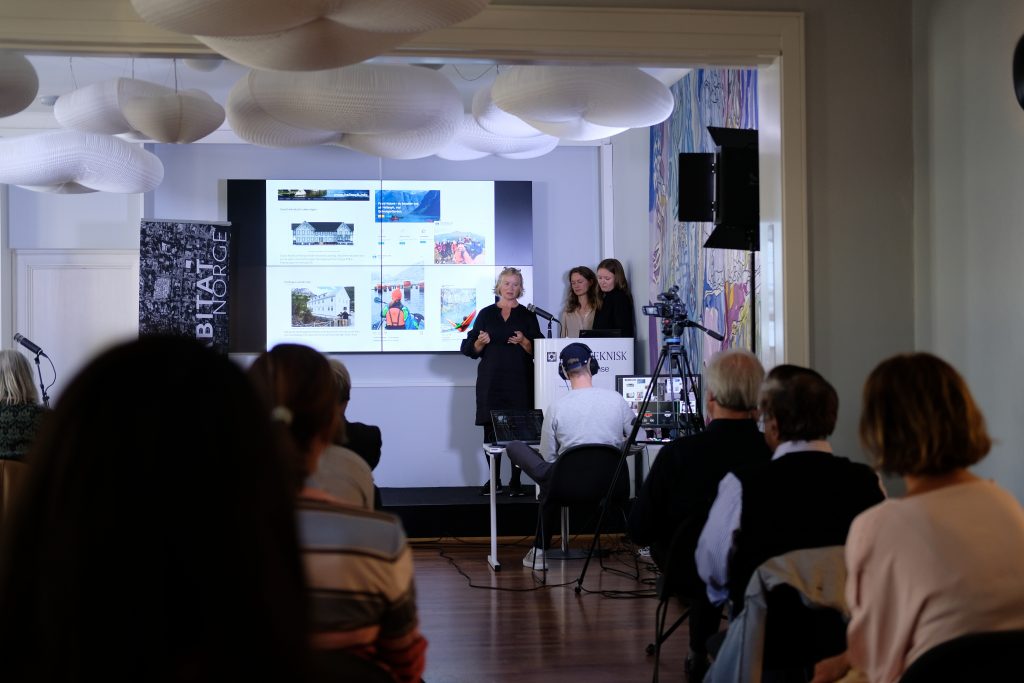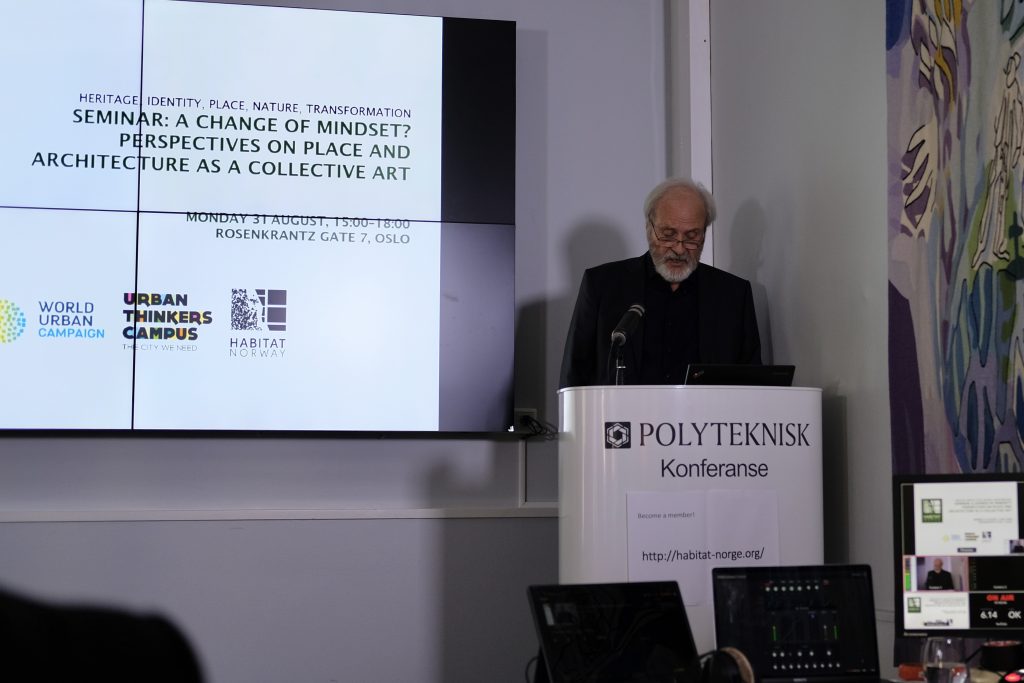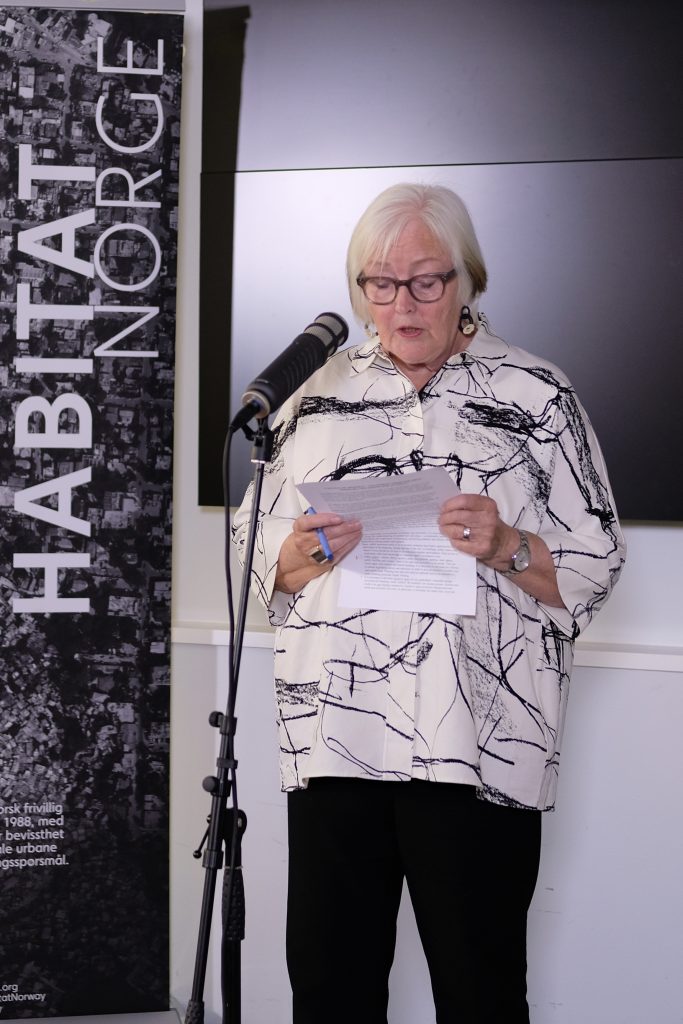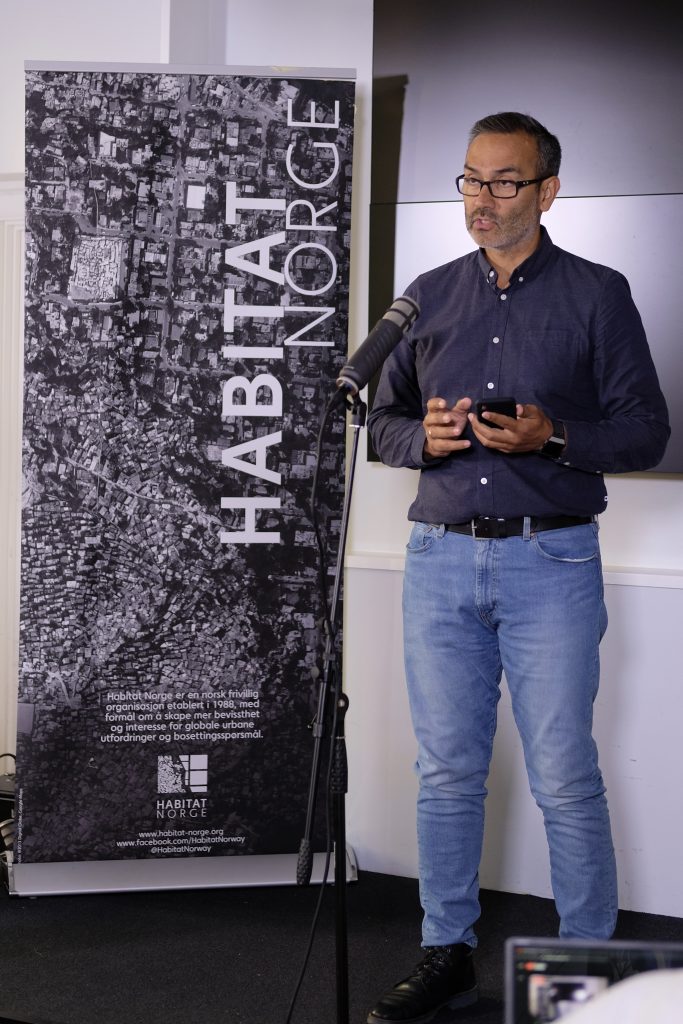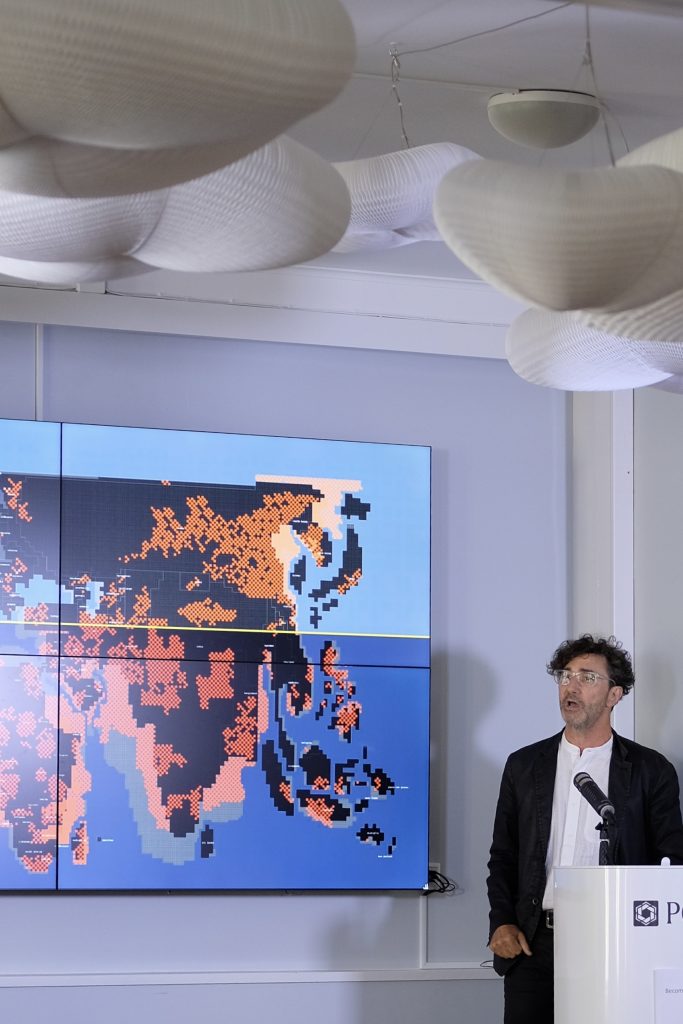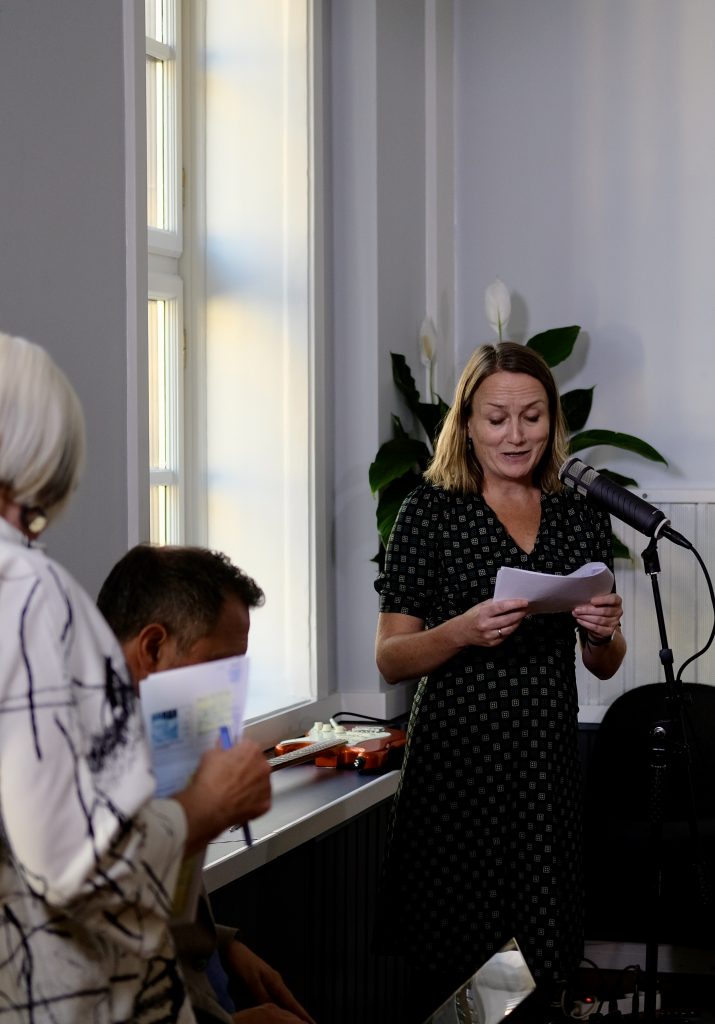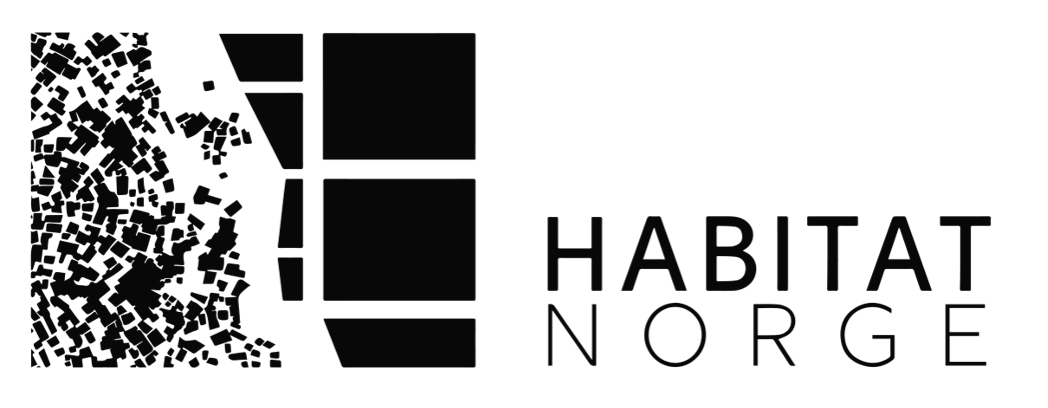The seminar A Change of Mindset? Perspectives on Place and Architecture as a Collective Art is the first “Urban Thinkers Campus” ever held in Norway. A direct result of the cooperation between Habitat Norway and UN Habitat’s World Urban Campaign. A UTC is an open space for critical exchange between urban actors who believe urbanisation is an opportunity and can lead to positive urban transformations.
As a result of the work with the seminar and cooperation with Urban Thinkers Campus, Habitat Norway proposes a Statement – Ten Points for Action.
FINAL STATEMENT
STATEMENT FROM THE OSLO
SEMINAR “CHANGE OF MINDSET”
TEN POINTS FOR ACTION
Our understanding of the world is manifested in what we make and produce. Today our way of building is characterized by market economy and controlled production processes – as if we could control everything through our consciousness. Both the given nature and what is transferred to us through history, are regarded as resources made for us. We – and especially architects and urban planners – need to challenge the current way of building, and bring this discussion into the public sphere.
Throughout history architecture has been regarded as a collective art, buildings are made for the citizens. Since Vitruvius (80 to 15 BC), architectural quality has been connected to the unit of beauty, usability and durability. This means that architecture offers a resistance towards the consumer society – it is neither the same as culture, nor as mere building; architecture as art is a fundamental component of sustainable urban development. By emphasising the importance of durability, we can open for architectural continuity.
With the Sustainable Development Goals the member states of the United Nations have pledged to “make cities and human settlements inclusive, safe, resilient and sustainable”. Target 11.4 seeks to strengthen efforts to protect and safeguard the world’s cultural and natural heritage. The UN Secretary General has declared this decade the Action Decade towards 2030 to deliver the SDGs mobilising all sectors at global, national and local level. It is time to build forward better.
In this spirit, and based on inputs from speakers, Habitat Norway has drafted ten action points meant to be the basis for our future work to “change mindsets” on the role and meaning of architecture. Not only among architects and urban planners but even more among politicians and property developers. These points might not be the most important ones and they are not written in stone.
1. Educate In school curriculas, from primary to college and university, it is necessary to encourage the understanding of architecture and place – a community space – as a tool to strengthen the experience of belonging, promoting aesthetic and ethical values and dimensions among pupils and students.
2. Co-create Open public processes need to be promoted; residents need better opportunities to participate in the planning, design and use of the city, its buildings, public spaces and nature. Focus should be on how to de-centralize popular participation. Then on how to implement with local knowledge as essential input. Co-creation is key.
3. Access Public spaces – streets, alleys, squares, parks, playgrounds, gardens, open spaces, public facilities and venues – need to be open and accessible to all people. They are social space with cultural and shared meaning. It is necessary to advocate key reforms in current legislation, norms and practices, in order to stop privatization of public and semi-public land. Planning laws and cost analysis methods need to be amended to make planning processes legally binding.
4. Include It is necessary to advocate inclusive space for all, particularly vulnerable groups including the homeless, street vendors, the disabled, low income groups, children and youth in an age-friendly perspective. Inclusive space promotes intergenerational, social and economic activities. In particular, it stimulates the small scale, local and informal economy also to take steps towards formality
5. Sustain Public space and the buildings and nature that surround and define it, need to be socially, economically and environmentally sustainable. Social sustainability requires security, equity and justice. Economic sustainability benefits from affordable capital and operating budgets. The local economy needs to be seen in relation to a globalized economy. Environmental sustainability addresses ecological issues and health. We need to encourage an architecture and urban design that is adaptable, appreciated and cared for. It is then sustained for a longer time. Initial social research, area based space- and feasibility studies with participation as obligatory programming tool should be promoted.
6. Allocate UN Habitat is proposing a set of targets for the amount of land allocated to streets and public space in urban areas to ensure adequate foundation for the city. The proposed goal/target being suggested is that 45% of land should be allocated to streets and public space. Action needs to be taken to complement these targets with qualitative targets assessing accessibility, use and safety among other aspects.
7. Assess Local authorities, agencies and organisations should be encouraged and supported in establishing indicators to assess the quality of urban spaces and their improvements over time. Relevant national and multilateral agencies such as UN Habitat, UNESCO and others should be strengthened to locate, document and collect best practices in planning, constructing, maintenance and legislation.
8. Advocate Such agencies should strengthen its support and advocacy for academic research in the field. This could include calls for papers, research collaboration and the provision of scholarships.
9. Express Public arts can be an effective method for celebrating community identity and belonging in open spaces. Each “building project” should have a budget for “beautification” and adaptation to natural surroundings.
10. Utilize Rebuilding after war and conflict offers opportunity to tap/utilize architectural and material heritage. It is important to promote the principle of reuse of building structures and materials. To achieve greater reuse of existing buildings and building components it is necessary to renew building codes and conservation practices
Recommendation: In accordance with the principles of the Sustainable Development Goals and the New Urban Agenda it is now time to better plan and build forward our towns and cities. Based on presentations and discussions at seminar “The Change of Mindset” (Oslo, 31 August 2020) Habitat Norway has developed 10 action points to promote and operationalize architecture as art – a fundamental component of sustainable development.
Habitat Norway calls on Nordic governments and their agencies, local authorities, civil society stakeholders as well as the research community to propose in relevant international fora joint, long term solutions to the present global, urban challenges. More than ever Nordic urban policy and assistance initiatives etc. based on our common welfare state principles are needed. The “Oslo statement” would represent an input to a collaborative dialogue between relevant Nordic stakeholders. We suggest an encounter in the form of a Nordic Urban Forum modelled after UN’s World Urban Forum.
